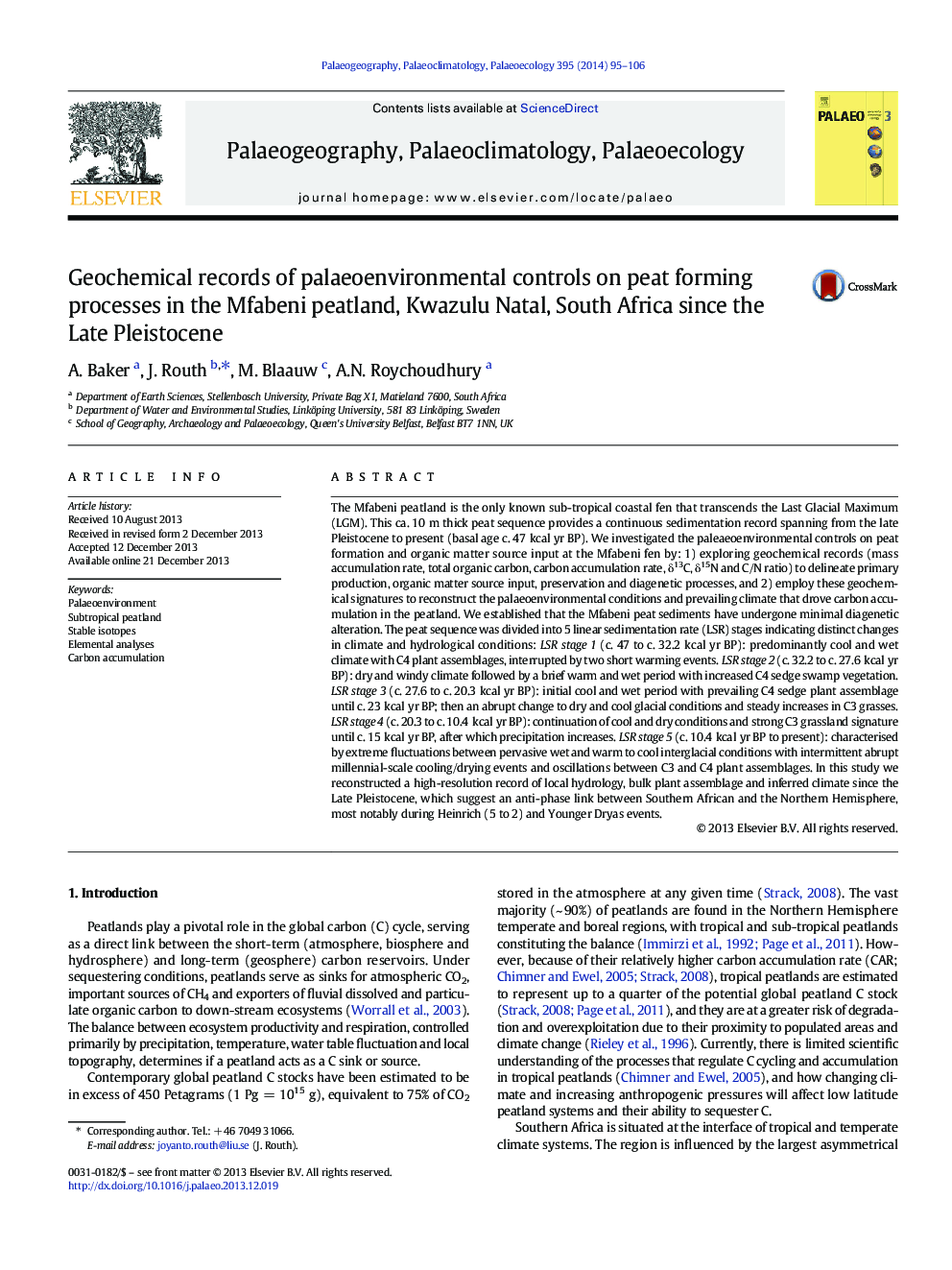| کد مقاله | کد نشریه | سال انتشار | مقاله انگلیسی | نسخه تمام متن |
|---|---|---|---|---|
| 4466389 | 1622195 | 2014 | 12 صفحه PDF | دانلود رایگان |
• Mfabeni peatland oldest land based climate record in southern Africa
• 5 linear sedimentation rate stages indicating changes in hydraulic conditions
• High resolution hydraulic and plant assemblage record and their climatic controls
• Archive suggests an anti-phase climatic link with the northern hemisphere.
The Mfabeni peatland is the only known sub-tropical coastal fen that transcends the Last Glacial Maximum (LGM). This ca. 10 m thick peat sequence provides a continuous sedimentation record spanning from the late Pleistocene to present (basal age c. 47 kcal yr BP). We investigated the paleaeoenvironmental controls on peat formation and organic matter source input at the Mfabeni fen by: 1) exploring geochemical records (mass accumulation rate, total organic carbon, carbon accumulation rate, δ13C, δ15N and C/N ratio) to delineate primary production, organic matter source input, preservation and diagenetic processes, and 2) employ these geochemical signatures to reconstruct the palaeoenvironmental conditions and prevailing climate that drove carbon accumulation in the peatland. We established that the Mfabeni peat sediments have undergone minimal diagenetic alteration. The peat sequence was divided into 5 linear sedimentation rate (LSR) stages indicating distinct changes in climate and hydrological conditions: LSR stage 1 (c. 47 to c. 32.2 kcal yr BP): predominantly cool and wet climate with C4 plant assemblages, interrupted by two short warming events. LSR stage 2 (c. 32.2 to c. 27.6 kcal yr BP): dry and windy climate followed by a brief warm and wet period with increased C4 sedge swamp vegetation. LSR stage 3 (c. 27.6 to c. 20.3 kcal yr BP): initial cool and wet period with prevailing C4 sedge plant assemblage until c. 23 kcal yr BP; then an abrupt change to dry and cool glacial conditions and steady increases in C3 grasses. LSR stage 4 (c. 20.3 to c. 10.4 kcal yr BP): continuation of cool and dry conditions and strong C3 grassland signature until c. 15 kcal yr BP, after which precipitation increases. LSR stage 5 (c. 10.4 kcal yr BP to present): characterised by extreme fluctuations between pervasive wet and warm to cool interglacial conditions with intermittent abrupt millennial-scale cooling/drying events and oscillations between C3 and C4 plant assemblages. In this study we reconstructed a high-resolution record of local hydrology, bulk plant assemblage and inferred climate since the Late Pleistocene, which suggest an anti-phase link between Southern African and the Northern Hemisphere, most notably during Heinrich (5 to 2) and Younger Dryas events.
Journal: Palaeogeography, Palaeoclimatology, Palaeoecology - Volume 395, 1 February 2014, Pages 95–106
